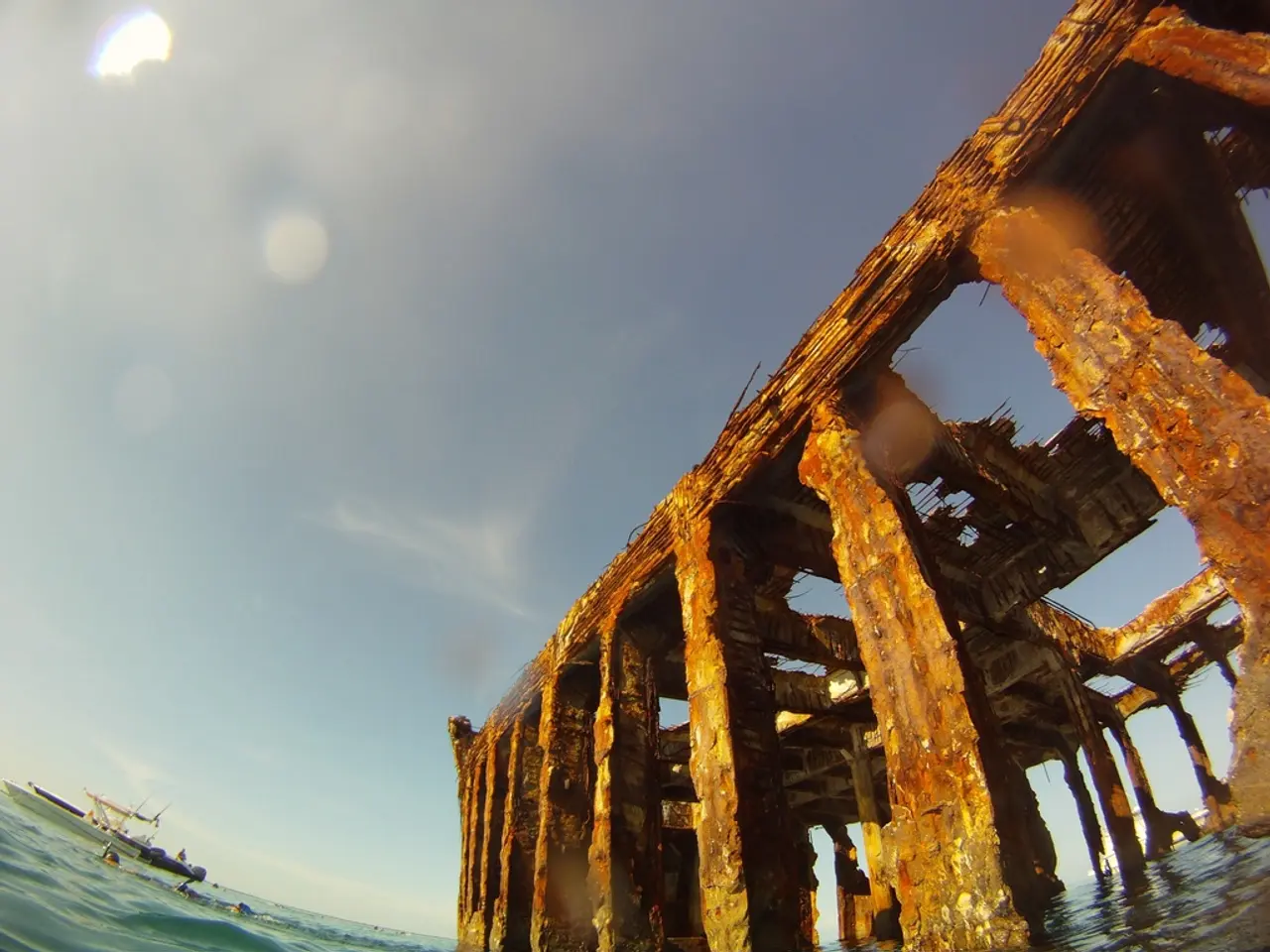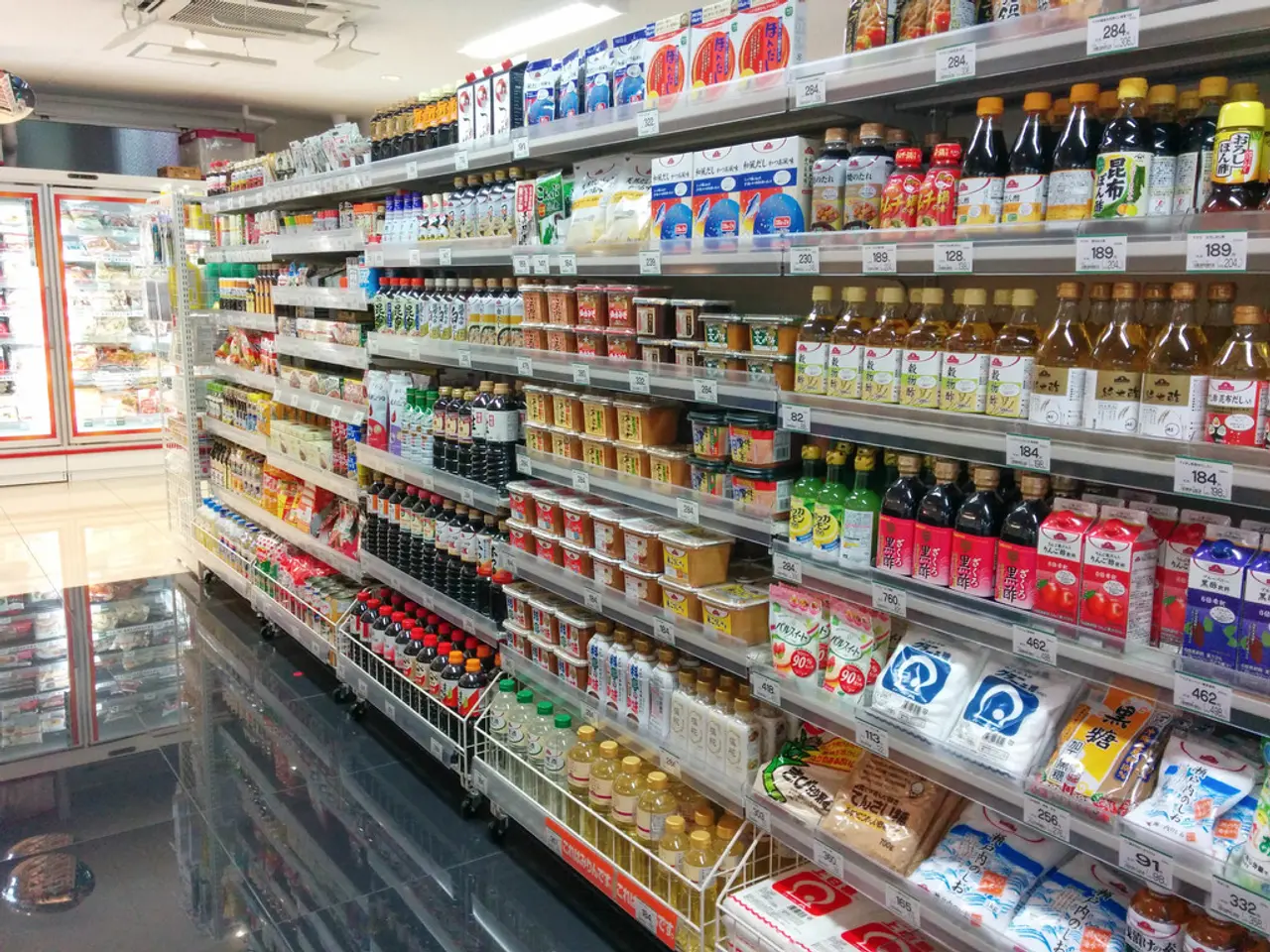Shipping Containers Encounter Predicted Overcapacity Shortage Persisting Until 2028
In the container shipping industry, a prolonged period of overcapacity is causing ongoing congestion at major ports and straining terminal operations. According to Braemar's Quarterly Container Fleet Statistics, 2.3 million TEU of new capacity was ordered in the first half of 2025, nearly matching the full-year total for 2024. This trend, coupled with a decrease in scrapping activity, is sustaining the overcapacity issue.
Despite aging fleets, the strong freight and charter markets, Cape of Good Hope reroutings, and steady global cargo volumes have stalled demolition activity. The industry's ongoing congestion is due to irregular container ship arrivals and increased vessel loads, which extend container dwell times from the usual 5 days to 7–8 days. This congestion is worsened by logistical disruptions dating back to the COVID crisis, the rerouting of ships around the Cape of Good Hope, and reshuffling of container alliances causing simultaneous vessel calls and high cargo volumes.
Looking at new vessel orders and design trends, recent ship designs prioritize cubic capacity over deadweight, enabling some vessels to carry over 100,000 cubic meters of cargo. This indicates a continuing trend toward very large container vessels, which can exacerbate port congestion if infrastructure does not keep pace.
Regional trends reveal persistent congestion and logistical strain in Northwest Europe, driven by large cargo volumes and operational challenges including labor actions. On the transatlantic trade routes, growth is reinforcing key ports' positions despite these challenges. In Africa, vessel designs with large cubic capacities hint at increasing regional import volumes. On Asia-Europe lanes, disruptions like Red Sea diversions have led to elevated freight rates, but carriers plan blank sailings and service reductions that may help reduce capacity imbalances and ease rate pressures later in 2025.
The future impact of overcapacity is expected to include continued freight rate corrections due to capacity discipline, with potential volatility influenced by tariff policies and geopolitical uncertainties. While fleet capacity grows, careful management through blank sailings and service adjustments could moderate overcapacity effects and stabilize shipping rates into the latter half of 2025. Terminal congestion and labor-related disruptions will likely persist unless significant operational improvements and infrastructure investments are made.
In summary, while overcapacity pressures remain significant now, industry strategies and market adjustments may temper their impact on pricing and service reliability in the near term, though infrastructure and labor challenges continue to constrain terminal efficiency. A growing trend in regional and sub-panamax vessel investment is reshaping the orderbook, but shipowners are cautious about shedding tonnage, having faced multiple disruptions in recent years. The number of new vessel orders is slightly down from the record 3.8 million TEU ordered in the second half of 2024, and a sharp drop in scrapping activity is widening the supply-demand gap in the container shipping industry.
| Aspect | Current Impact | Future Outlook | |---------------------------|--------------------------------------------------|--------------------------------------------------------------| | Vessel capacity | Large vessels with cubic focus increasing volume | Growth in fleet capacity continues; scrapping not keeping pace | | Terminal congestion | High due to irregular arrivals and large loads | Likely persists without infrastructure or labor solutions | | Freight rates | Elevated due to disruptions and demand shifts | Expected rate corrections via capacity discipline | | Regional trends | NW Europe congestion; strong US trade; Africa increasing capacity | Asia-Europe lane adjustments with blank sailings; maintain trade growth | | Scrapping activity | Insufficient to offset new deliveries | Not highlighted; likely minimal impact on reducing capacity |
- The ongoing congestion in the container shipping industry, due to irregular container ship arrivals, increased vessel loads, logistical disruptions, and large cubic capacity vessels contributing to longer container dwell times, could potentially strain the global trade industry, particularly in regions like Northwest Europe.
- The strong finance market and high freight rates, coupled with the industry's growing trend toward very large container vessels with large cubic capacities, may impact the automotive sector, as these vessels could exacerbate port congestion if infrastructure does not keep pace, possibly leading to delays in delivery of cars and other vehicles.
- As the container shipping industry continues to grapple with overcapacity, resulting in a supply-demand gap due to a sharp drop in scrapping activity, the transportation industry will likely experience cost pressures, requiring carriers to strategically employ blank sailings and service adjustments to moderate overcapacity effects and stabilize shipping rates in the future.




